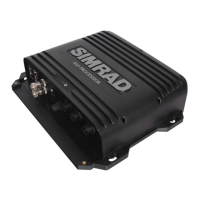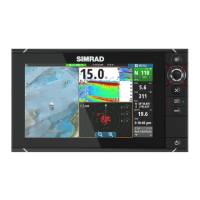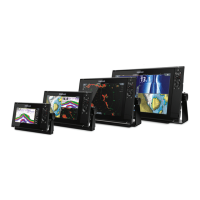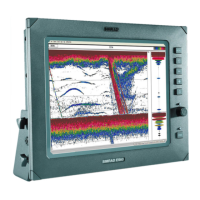Use the A-Scope while adjusting the gain and threshold
settings manually.
Setting gain and threshold
It is convenient to use the A-scope window when adjusting
gain and threshold manually. Follow this procedure to
adjust gain and threshold for normal circumstances:
Switch to a echosounder window. If necessary, press •
to adjust range so that the bottom is shown.
If necessary, select the echosounder frequency •
to adjust the settings for. Press
, select
Frequency and select 200 kHz or 50 kHz.
•
> Echosounder splits > Split A-scope.
Press •
to display the Gain window. To adjust gain
or threshold for a frequency, press
up or down
to select the setting to adjust, then press
left or
right to change the setting.
Set threshold to zero.•
Adjust Gain so the peak of the strong signal from the •
bottom just touches the gain line.
Adjust threshold so that it is just to the right of the •
noise.
Press •
to close the gain window.
If required, repeat these steps to adjust gain and •
threshold for the other frequency.
Note: Setting the gain higher will display more detail
from weak echoes, like sh, but will loose detail from the
strong echo from the bottom.
Fish recognition
The echo strengths shown on the A-scope can be useful
in recognizing the type of sh. Different species of sh
have different sizes and shapes of swim bladders. The
air in the swim bladder reects the ultrasonic pulse, so
the strength of the echo varies between sh species
according to the size and shape of the swim bladder.
When catching sh from a school, note the species and
the strength of the echo that it returns on the A-scope.
Then, when that particular echo is seen again, it is likely
to be the same sh species.
Bottom type
The shape of the echo strengths in the A-Scope can help
you to recognise the type of bottom.
